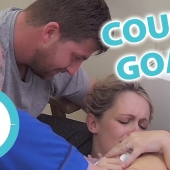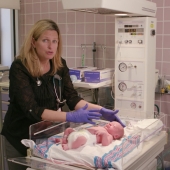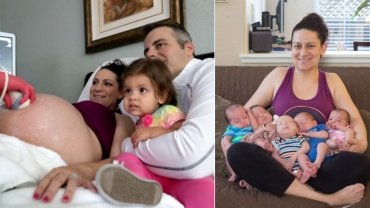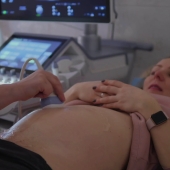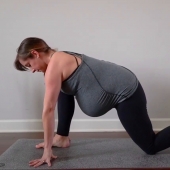As your baby grows during pregnancy they may move around quite a bit in the womb. You might feel kicking or wiggling or your baby may twist and turn during the last month of pregnancy your baby is bigger and doesn't have much wiggle room. The position of your baby becomes more important as your due date nears. This is because your baby needs to get in the best position to prepare for delivery.
Your doctor will continually assess the position of your baby in the womb especially during the last month. Watch on to find out what it means when your doctor uses words like anterior, posterior, transverse or breech to describe the position of your baby. You'll also learn what to do if your baby isn't in the best position before your due date.
Anterior: The baby is head down, with their face facing your back. The baby's chin is tucked into their chest and their head is ready to enter the pelvis. The baby is able to flex their head and neck, and tuck their chin into their chest. This is usually referred to as occipito-anterior, or the cephalic presentation. The narrowest part of the head can press on the cervix and help it to open during the delivery. Most babies generally settle in the head down position around the 33 to 36 week range. This is the ideal in safest position for delivery.
Posterior: The baby is facing head down, but their face is positioned toward your stomach instead of toward the back. This is typically called the occipito-posterior (OP) position. In the first stage of labor, about one-tenth to one-third of babies are in this position. Most of these babies will spontaneously rotate themselves to face in the right direction before birth. But in 10 to 28 percent of cases, the baby doesn't rotate. A baby in this position increases your chances of having a prolonged delivery with severe back pain. An epidural might be needed to ease some of the pain during delivery.
Breach: A breach baby is positioned with their buttocks or feet first. There are three variations of a breech presentation:
Complete breech: When the buttocks are pointing toward the birth canal (downward), with the legs folded at the knees. The feet are near the buttocks.
Frank breech: The buttocks are toward the birth canal, but the baby's legs aren't straight up in front of their body and their feet are near the head.
Footling breech: One or both of the baby's feet are pointing downward toward the birth canal.
A breech position is not ideal for delivery. It occurs in about one of every 25 full-term births. Though the majority of breech babies are born healthy, they may have a higher risk of birth defects or trauma during delivery. In a breech birth, the baby's head is the last part of the body to emerge from the vagina, which makes it more difficult to get through the birth canal. This position can also be problematic because it increases the risk of forming a loop in the umbilical cord that could cause injury to the baby if they're delivered vaginally.
Your doctor will discuss options for trying to turn the baby into a head down position before you enter into your final weeks. They might suggest a technique called a external cephalic version (ECV). This procedure involves applying pressure to your abdomen. It may be uncomfortable for you, but it isn't dangerous. The baby's heartbeat will be monitored very closely and the procedure will be stop'd immediately if a problem develops. This technique is successful about half the time.
If ECV doesn't work, you may need a caesarean delivery in order to safely give birth to a breech baby. This is especially true in the case of a footling breech. In this case, your umbilical cord could be squeezed as the baby moves toward the birth canal. This could cut off the baby supply of oxygen and blood.
Transverse lie: The baby is lying horizontally in the uterus. This position is known as transverse lie. It's extremely rare at delivery, since most babies will turn themselves to be head down prior to your due date. If not, babies in this position will require a caesarean delivery. This is because there is a small risk of the umbilical cord prolapsing (coming out of the womb before the baby) when your water breaks. An umbilical cord prolapse is a medical emergency, and the baby must be delivered very quickly via cesarean if it happens.
- 47450 views

